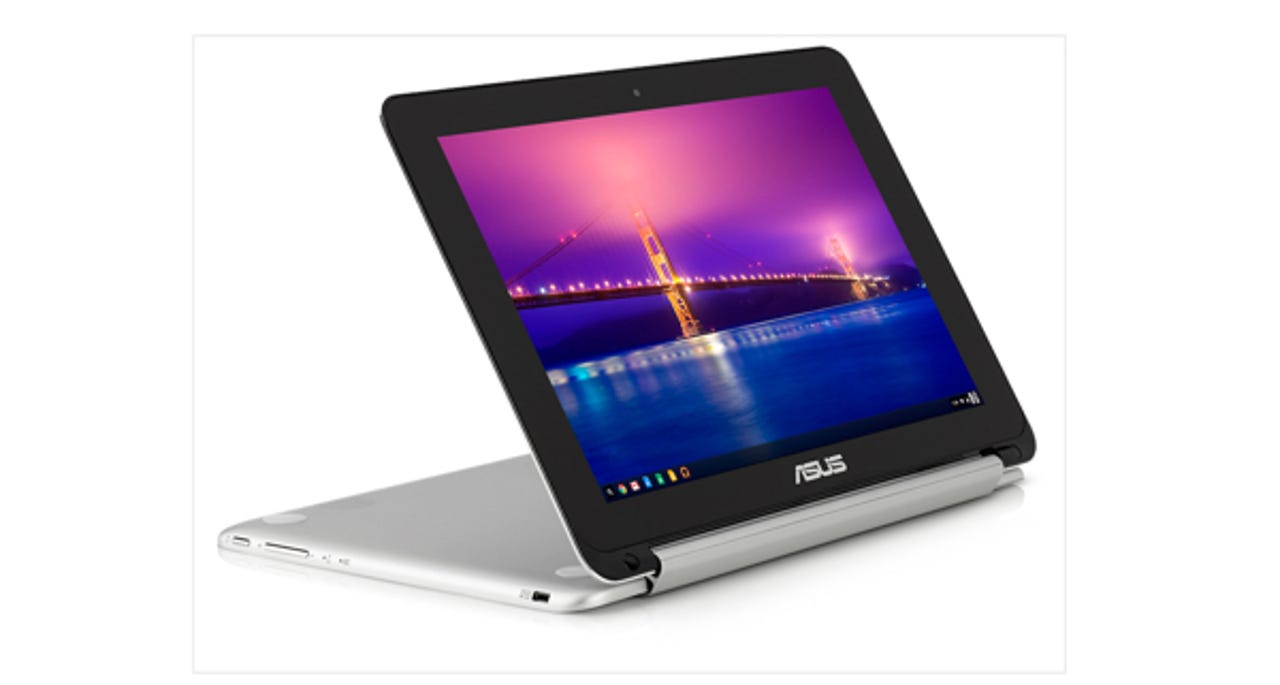Chromebook Flip: Incentive for Google to improve touch for Chrome OS


The Asus Chromebook Flip unveiled this week is not the first hybrid running Chrome OS. That distinction goes to the Lenovo ThinkPad Yoga 11e released last year that was aimed at the education sector. It was expensive and clunky for a tablet and we didn't hear much about it after release.
Related: The best Chromebook ever: Google's 2015 Pixel | New Chromebook Pixel: Crystal clear display, keyboard a joy, ultimate in design | Am I psyched for Pixel? Sure. But older Chromebooks age gracefully
The Chromebook Flip is the first consumer facing hybrid, and is small (10.1-inch display) and thin. The display rotates all the way round to rest under the keyboard, becoming a thin and light (under two pounds) tablet. It is similar to a number of Windows models with one big exception: it lacks good touch support.
Chromebooks have been available with touch screens since the original Chromebook Pixel. They aren't common but there are a few models on the market. One reason they aren't common is that touch support in Chrome OS is not very good, so there's no incentive for OEMs to build Chromebooks with touch.
Featured
That's where the Chromebook Flip will hopefully play a role in the evolution of the genre. As the first reasonable consumer facing Chrome tablet, it may finally give Google incentive enough to get in high gear to bring good touch operation to the OS.
This shouldn't be a stretch for the company behind Android, a platform designed from the ground up to use touch as the primary method of operation. But Chrome OS is the opposite; it was designed for cursor control as the interface came directly from the desktop version of the Chrome browser.
Simple touch control has been added to Chrome OS over time, but it's not very good compared to Android, Windows 8.1, and iOS. It is basically tapping tiny controls on the screen, if you can hit them precisely enough.
That's not good enough for operating a tablet, which will be glaringly obvious on the Chromebook Flip. Users of a Chrome tablet must be able to operate it entirely by touch or there is no point to having one. The Flip is crying out for such operation, and hopefully Google will step up and make it happen.
With adequate touch support, a Chromebook tablet can be a compelling device, even in the enterprise and education sectors. Google's already pushing the Chromebook in schools, so adding good touch capability fits into its strategy.
A Chrome tablet needs good pinch/zoom functionality not just in the browser, it needs it throughout the OS. Smooth scrolling is also mandatory to provide a compelling tablet experience.
Google should take a page from Microsoft's outstanding job on the touch versions of the Office apps. Make the Chrome browser interface nice and big for touch-friendly operation. Add a single tap function to take the web page full screen and back. It doesn't require rocket science, just get rid of the busy interface on the current Chrome browser and replace it with big attractive controls.
Perhaps Google is already hard at work on improving touch on Chrome. If so it's not talking much about it. I suspect there is sufficient interest for a Chrome tablet in the consumer market. Hopefully the Chromebook Flip will show that to be the case, even with poor touch operation. Google needs to get touch nicely implemented on Chrome OS to give tablets a chance. Otherwise Asus is going to be left standing with egg on its face.